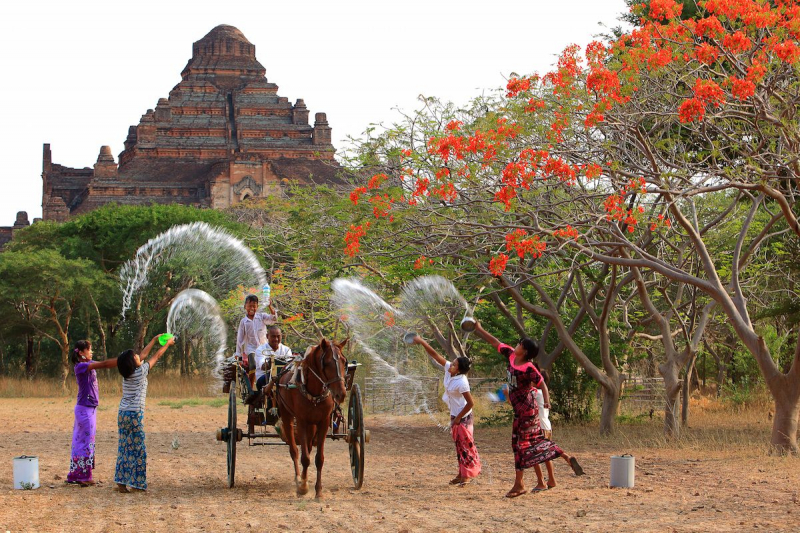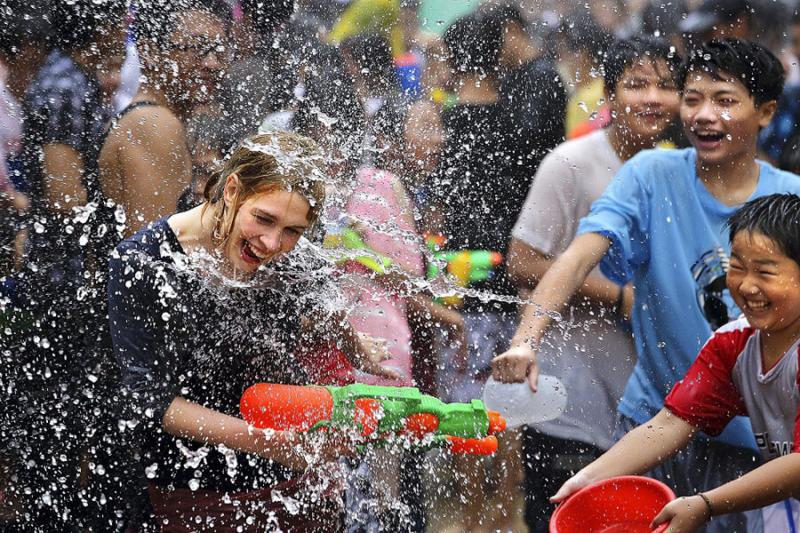Traditional festivals
The traditional Myanmar calendar has twelve months and twelve corresponding festivals. The majority of the festivals are related to Burmese Buddhism, with the local paya pwè (pagoda festival) being the most important in any town or village. This is one of the Unique Cultural Characteristics In Myanmar.
Thingyan, a four-day celebration of the upcoming Lunar New Year, is the most well-known festival. This festival takes place before the Burmese New Year, on the first day of Tagu, which is in mid-April. People splash water on one another, which is related to and similar to other Southeast Asian New Year festivals (Songkran, Cambodian New Year, Sinhalese New Year, and Lao New Year). Thingyan, on the other hand, has religious significance, as it marks the days when Buddhists are expected to observe the Eight Precepts of Buddhism.
Thingyan greets the Myanmar New Year by washing away dirt from the body and bad memories from the previous year. Anyone who leaves the house runs the risk of being doused from head to toe by enthusiastic revelers. No one minds because it is so hot. Young people enjoy it the most. Although they appear to be afraid of being soaked, it is a great way to impress the opposite sex.















